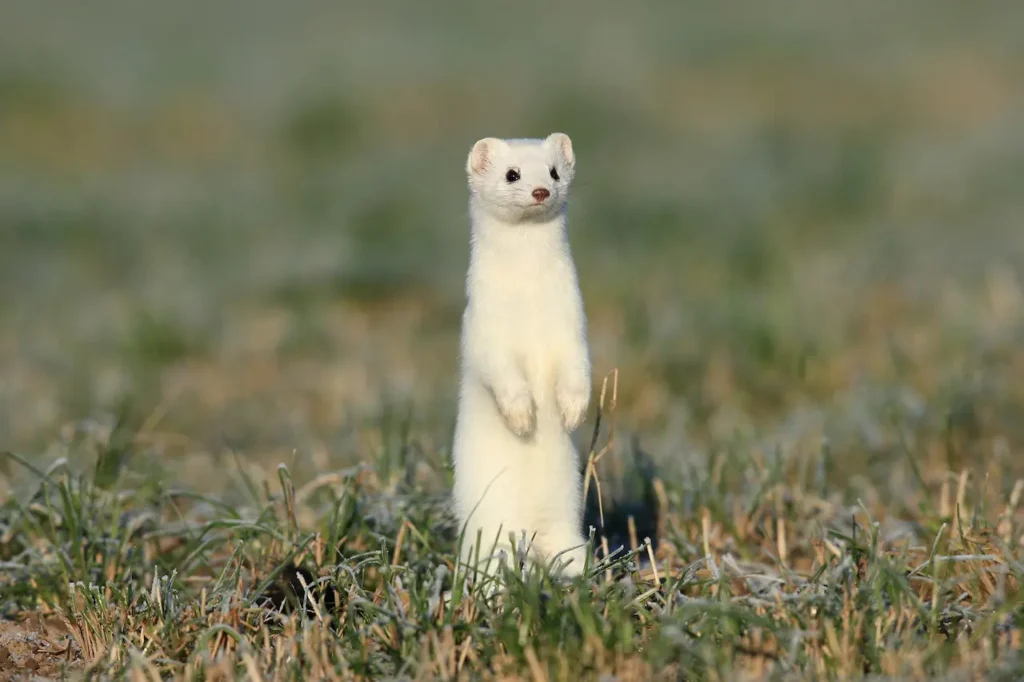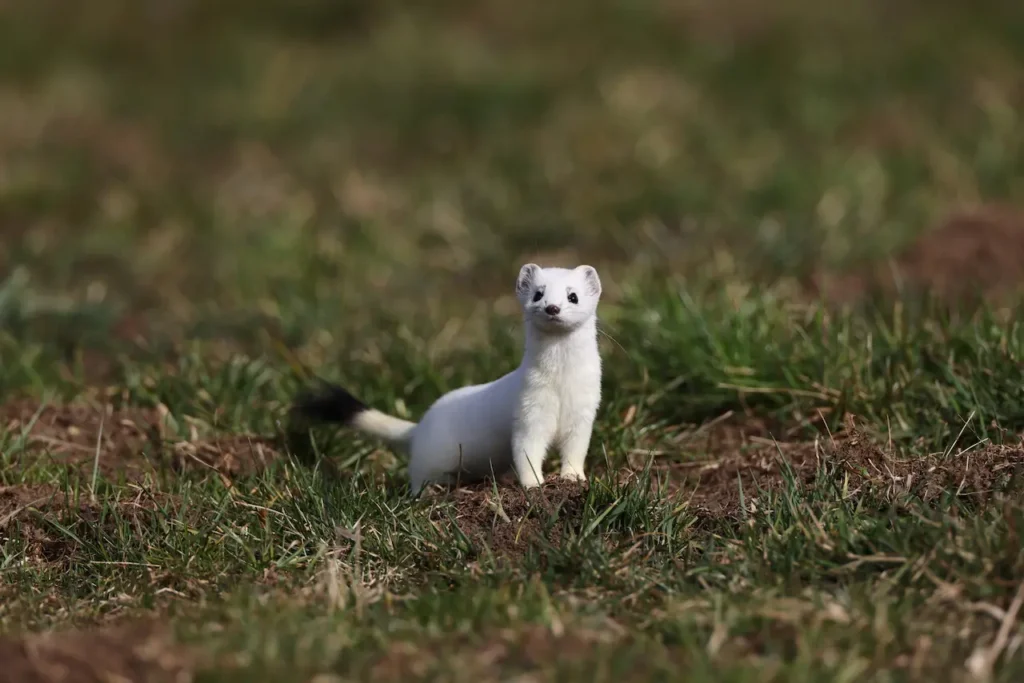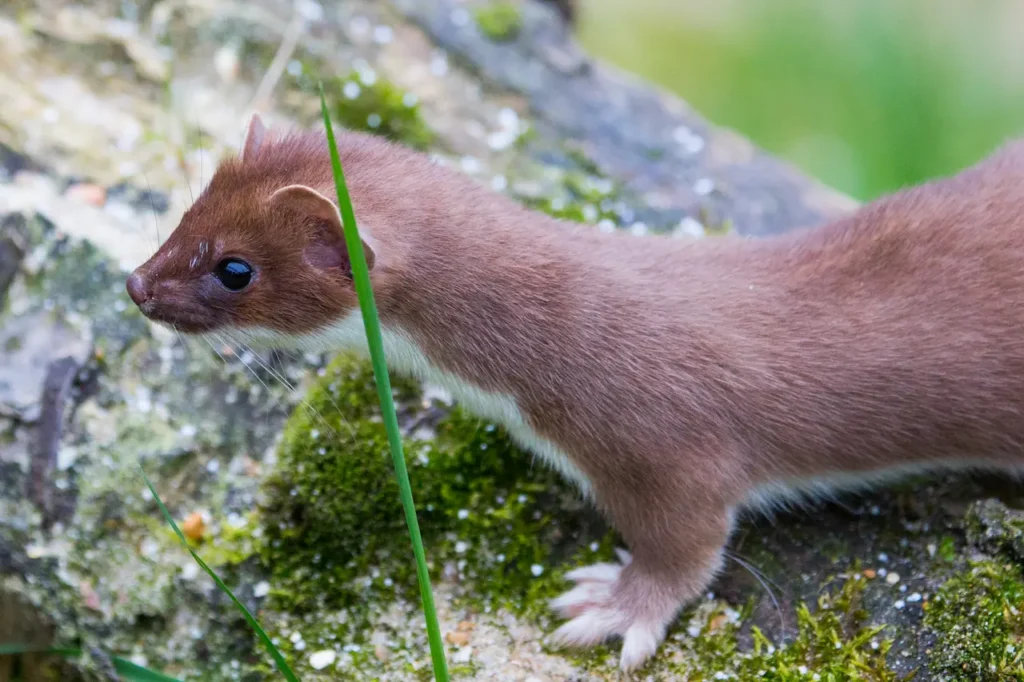What Eats A Stoat (Mustela erminea)?
Categories
- Accipitridae (1)
- Acrididae (1)
- Algae (2)
- Alligatoridae (1)
- Amoebidae (1)
- Amphibians (3)
- Anatidae (1)
- Anguillidae (1)
- Arachnids (2)
- Bears (2)
- Big Cats (3)
- Birds (13)
- Bovidae (5)
- Bufonidae (1)
- Camelids (1)
- Cameras (1)
- Canines (13)
- Caridea (1)
- Carnivora (10)
- Castoridae (1)
- Cats (5)
- Cebidae (1)
- Cephalopod (1)
- Cervidae (2)
- Cetacean (1)
- Chondrichthyes (1)
- Crocodilia (2)
- Crustaceans (4)
- Culicidae (1)
- Cyaneidae (1)
- Dasypodidae (1)
- Dasyurids (1)
- Deer (1)
- Delphinidae (1)
- Desktop (1)
- Didelphidae (1)
- Dinosaurs (1)
- Dogs (13)
- Dolphins (2)
- Echinoderms (1)
- Education (10)
- Elephantidae (1)
- Equine (1)
- Erethizontidae (1)
- Erinaceidae (1)
- Farming (1)
- Felidae (5)
- Fish (5)
- Food Chain (31)
- Food Web (2)
- Formicidae (1)
- Frugivore (1)
- Gaming (1)
- Gastropods (1)
- Giraffids (1)
- Great Apes (2)
- Health Conditions (3)
- Herbivore (4)
- Hi-Fi (1)
- Hippopotamidae (1)
- Hominidae (1)
- Insects (10)
- Invertebrates (2)
- Keyboards (1)
- Laptops (1)
- Leporidae (1)
- Mammals (23)
- Marsupials (4)
- Mephitidae (1)
- Microchiroptera (1)
- Mollusks (2)
- Mongoose (1)
- Muridae (1)
- Nocturnal Animals (1)
- Odobenidae (1)
- Omnivore (2)
- Phasianidae (1)
- Phocidae (1)
- Plankton (1)
- Plants (2)
- Primate (1)
- Ranidae (1)
- Reptiles (7)
- Rhinocerotidae (1)
- Rodents (5)
- Salamandridae (1)
- Scarabaeidae (1)
- Sciuridae (2)
- Sharks (1)
- Shellfish (1)
- Sound (1)
- Spheniscidae (1)
- Suidae (1)
- Superfamily Papilionoidea (1)
- Theraphosidae (1)
- What Eats (5)
Introduction
Native to Asia, Europe, and North America, the little but vicious stoat (Mustela erminea) goes by a few names: short-tailed weasel, ermine, and the like. Stoats may only be 8 to 14 inches long, but their reflexes are so fast that they can down anything that is considerably bigger than them. This makes them formidable predators.
The mesocarnivorous role that stoats play in controlling the numbers of the small animals and birds that they eat is a crucial one in the ecosystem. However, stoats also need to be vigilant since they are preyed upon by many larger predators. The function of these top-level predators in controlling stoat populations and keeping them from eating all the other animals in their environment is crucial.
This article delves deep into the intricate network of relationships within the food web that includes stoats. To start, let’s take a look at six of the most important predators that use stoats as a staple in their diet. Secondly, we shall go into six different kinds of prey that stoats mostly consume via hunting and eating. The stoat plays an essential part in ecosystems and has evolved useful adaptations; understanding this requires knowledge of both the prey and the predators of the stoat.
Table of Contents
Toggle
What Eats A Stoat
What Eats Stoats
Even though they’re little, stoats aren’t helpless. They are able to ward off several predators thanks to their speed, agility, and fierceness. But many larger animals still use stoats as bait. Six of the most prominent predators that prey on stoats are as follows:
Red Foxes
The stoat is a perfect target for the opportunistic red fox. Foxes are able to locate stoats and their burrows by using their acute sense of smell. When cornered, stoats put up a fierce battle, but the bigger fox has the upper hand due to its size and strength. As part of their wide omnivorous diet, red foxes occasionally eat stoats. Stoat populations are kept in check and from getting out of hand by fox predation.
For several important reasons, red foxes consume stoats. Adult stoats weigh between 200-350 grams, which is the perfect amount for a fox supper because it is neither too much nor too little. Foxes often prey on stoats by raiding their burrows and dens, where they may easily catch not just adults but also young kits and juveniles. Foxes have an easy food supply in the form of stoats since they are common and plentiful. Despite their vicious nature, stoats are unable to fend off larger foxes due to their small stature, weak build, and inability to hunt in packs. Because foxes hunt on rabbits and rodents as well as stoats, fox predation helps keep stoat numbers in check.
Hawks and Owls
Raptors, such as owls and hawks, are masters of the air and keep a vigilant watch on stoats in open spaces both during the day and at night. The main birds that prey on stoats are large-tailed hawks and great-horned owls. Swooping down from above, they kill stoats in an instant with their razor-sharp talons by taking advantage of the element of surprise. These raptors rely on stoats for a healthy meat supply. The natural control mechanism for stoat populations is raptor predation, which ensures that other prey populations are not overwhelmed.
Stoats, such as owls and hawks, are preyed upon by raptors for several important reasons. Long periods of time spent hunting rodents and rabbits in open areas put stoats at risk of airborne strikes. Big owls and hawks may easily kill adult stoats with their strong claws and feet. Using their feathers for camouflage and their ability to fly silently, raptors attack stoats from above. Hunting down stoat dens, owls such as great horned owls would prey on young and defenceless kits and youngsters. The meat of stoats is easily consumable by raptors, who use it for both survival and feeding their young. The ecological balance is maintained by raptor predation, which regulates the population of stoats.
Feral Cats
An adult stoat is only one of many tiny animals that feral cats would feed on if given the chance. Living on the periphery of human towns, where tiny prey is plentiful, is ideal for feral cats. Feral cats can attack stoats with precision because of their agile bodies, keen sense of smell, and sharp claws. Feral cats, although not naturally predatory, play an important role in keeping stoat numbers under control in places close to human settlements.
Wild cats target stoats for several important reasons. Feral cats are able to thrive on their own because of their innate hunting skills, which allow them to feed on tiny animals like mice and stoats. The athletic agility and quickness of cats allow them to pounce on fleeing stoats. They can kill stoats with ease using their keen claws. A wild cat may easily kill even an adult stoat due to its tiny size. Feral cats have a reliable food supply in the form of stoats when they live in close proximity to human settlements. Feral cats play an important role in maintaining a healthy population of stoats and other small prey species in their habitat by preying on them.
Snakes
Stoats are vulnerable to ambush predation by large constrictor snakes such as boas and pythons. In their pursuit of a quick meal, stoats will frequently attack snake dens, occasionally becoming victims themselves. In only a few short seconds, a huge constrictor snake’s muscular coils may be around a stoat’s body, preventing it from breathing and killing it. Stoats are preyed upon from time to time by some poisonous snakes, such as rattlesnakes and cobras. Although stoats have an advantage over snakes due to their incredibly fast reflexes, the element of surprise can also work against them.
Stoats are preyed upon by snakes for several important reasons. The muscular coils of large constrictors, such as pythons and boas, are more than enough to overwhelm and kill adult stoats. Snakes have an edge in combat due to their ability to ambush prey while concealed. Stoats are quickly and easily killed by constrictors because of their strong jaws and the asphyxiation they cause. Additionally, stoats can be fatally bitten by some poisonous snakes. Snakes will seize the chance for a quick and easy meal when stoats assault snake caves, bringing themselves in striking distance. Stoats are a great source of protein and healthy fat for snakes. To keep snake dietary supplies, like rodents, from becoming too depleted, predators play an important role in controlling stoat populations.

A White Stoat on the Grass
What Do Stoats Eat?
Now let’s examine the other side of the predator-prey relationship – the 6 main food sources that stoats prey upon as part of their carnivorous diet:
Rabbits
For stoats, rabbits are both a staple food and a favourite prey item. Young rabbits and leverets are their favourite prey, but adult rabbits are just too big for them to catch. As soon as a rabbit enters a burrow or lair, a stoat will pursue it inside in pursuit of a kill. They wait for rabbits to emerge from their warrens, demonstrating remarkable patience as hunters. Stoats patiently wait for their protein-rich rabbit meal, and the wait is well worth it. Stoats rely on rabbits for the high-quality food and energy they require to live a healthy life and have healthy, rapid-growth kits.
In order to successfully hunt rabbits, stoats have developed a number of sophisticated techniques. They may remain still near rabbit burrows for hours on end, waiting for their prey to get within striking reach. Their patience is truly astounding. Above ground, they may effectively chase after escaping rabbits because of their lightning reflexes and speed. As they fearlessly pursue rabbits into their elaborate subterranean tunnels and dens, stoats show remarkable persistence and bravery. When hunting rabbits in wide grassy areas, their brown summer coat serves as a camouflage. The stoat’s excellent sense of smell helps it to locate rabbit dens and other hiding spots. When given a chance, stoats will prey on young, defenceless rabbits and leverets instead of fully-fledged adults.
Voles
Voles are little, chubby rodents that inhabit marshes, fields, and wetlands in big colonies. Stoats prey on them because they spend much of their time above ground, foraging for food among plants and grasses. In fact, stoats will eat many voles every day if given the chance. Their long, tubular bodies make them ideal for diving into subterranean tunnels and vole burrows in search of food. Stoats rely on voles as a fuel source for their rapid metabolism due to the high calorie and fat content of voles.
When hunting voles, stoats employ a number of unique adaptations and tactics. Voles that try to escape above ground can be caught by these swift predators. Because of their long, slim bodies, they can swiftly follow voles into their elaborate underground networks of tunnels and burrows. For hours, stoats would stand still outside vole tunnels, waiting for the rodents to emerge so they could attack. They prey on young voles when they can because of their inherent weakness. A stoat may return to its successful hunting areas many times a day, allowing it to consume multiple voles. For above-ground vole hunting, their brown summer fur serves as a disguise. The stoat’s excellent sense of smell helps it locate the underground homes of voles.
Mice
Stoats feed mostly on mice, another important rodent species. They prey on mouse nests, pursue rodents in fields and woods, and even hunt them down in their burrows. While hunting, a stoat may eat many mice in a day. Mice are simple prey for stoats to hunt and kill due to their slim bodies and fast reflexes. Mice are the perfect prey for stoats since they are plentiful, relatively tiny, and a good source of energy for their active lifestyle.
Stoats have a wide array of characteristics that help them hunt mice. They can swiftly pursue escaping mice above ground because of their lightning reflexes and acceleration. Their slim, tube-shaped bodies enable them to swiftly track mice as they venture further into their underground networks. When stoats hunt mice, they may blend in with their surroundings thanks to their brown or white fur. Their patience is quite remarkable; they stand still outside of mouse tunnels for long periods of time until the rodents come out. Instead of attacking fully mature adults, stoats would often prey on younger, more defenceless mice. On a typical day, they may devour many mice, and they would return to their hunting grounds often. Stoats are masters at finding mouse holes and nests because of their excellent senses of smell, hearing, and eyesight.
Shrews
The tiny, carnivorous animals known as shrews are an important food source for stoats. Their keen sense of smell allows them to locate shrews hiding in their tunnels and nests below ground. Because of their long, slim, tubular body form, stoats are excellent at chasing shrews into confined areas. Stoats can keep up with their rapid metabolism by eating shrews, which are rich in calories.
Stoats catch shrews using a variety of efficient hunting tactics. They can swiftly hunt shrews via burrows and tunnels because of their slim build. They focus their hunting efforts on secret shrew tunnels and nests, which they can locate with their acute sense of smell. Their lightning-fast reflexes allow them to catch shrews in the air as they run. Stoats will prey on younger, more defenceless shrews whenever they can. They return to their hunting grounds often and may consume many shrews in a day. For hours on end, stoats would stand still outside shrew tunnels, waiting for the rodents to emerge. They can sneak up on shrews from above or below, thanks to their disguised fur.
Snakes
Stoats will not hesitate to fight poisonous snakes, including vipers, rattlesnakes, and copperheads. In order to subdue prey and escape being bitten by snakes, they depend on their incredibly fast reflexes and agility. Even though snakes can be hazardous, stoats prefer preying on smaller snakes since they can quickly overpower them. As a carnivore, stoats get a lot of protein from snakes. Because of their agility and quickness, mustelids are not a threat to stoats with their venom.
Stoats are adept at hunting snakes using a variety of tactics. They can outrun even the swiftest vipers because of their lightning reflexes. Their nimble movements allow them to evade snakes and launch simultaneous attacks from several directions. Stoats show incredible perseverance by charging at snakes without thinking twice or worrying about getting poison. Killing snakes swiftly is their goal. Thus, they go for the neck and head. Stoats are able to expertly hunt snakes on land and in water since they are good swimmers, climbers, and runners. When they see a chance, they pounce on smaller, more controllable snakes. Stoats often make many raids on snake dens in search of food.

A White Stoat on the Grass
Lizards and Amphibians
Stoats augment their food supply by snatching up smaller amphibians and reptiles, such as salamanders, frogs, and lizards when the opportunity presents itself. When pursuing and catching this nimble prey species, their quick speed is a clear advantage. In order to swiftly dispatch frogs and lizards, stoats have evolved to target their vulnerable head and neck areas or vital organs. Although not the main source of nutrition for the carnivorous stoat, these prey species do add diversity and essential components to the animal’s diet.
There are a number of successful tactics that stoats use while hunting lizards, frogs, and salamanders. Because of their lightning-fast reflexes and acceleration, they can catch nimble prey before it flies away. Stoats swiftly incapacitate their victims by precisely striking them in the head and neck. As soon as they see an opportunity, they pounce on weaker, more easily overcome targets. When stoats are out and about in areas near bodies of water, they may prey on many little amphibians and reptiles in a single day. Because of their in-depth familiarity with their hunting grounds, they are able to pinpoint areas with high concentrations of possible prey. In their relentless pursuit of evasive amphibians, stoats will plunge into water or burrow into mud if necessary. Their fur allows them to ambush prey invisibly.
Conclusion
Stoats bear the dual burden of being both an essential ecological component and a formidable predator. The numbers of stoats are controlled by apex predators such as snakes, raptors, martens, and red foxes. As a result of their exceptional hunting abilities and adaptations, stoats consume a wide variety of food, including rabbits, rodents, birds, snakes, fish, and more.
The ecology, evolution, and behaviour of stoats can be better understood by delving into these intricate webs of food webs. Despite their small stature, stoats play a significant role as mesocarnivores in determining the structure of ecosystems. But they have to keep balancing their own demands for existence with the desire to avoid being prey to larger predators. The stoat’s pivotal role in the complex web of life can be shown by investigating its food web.
